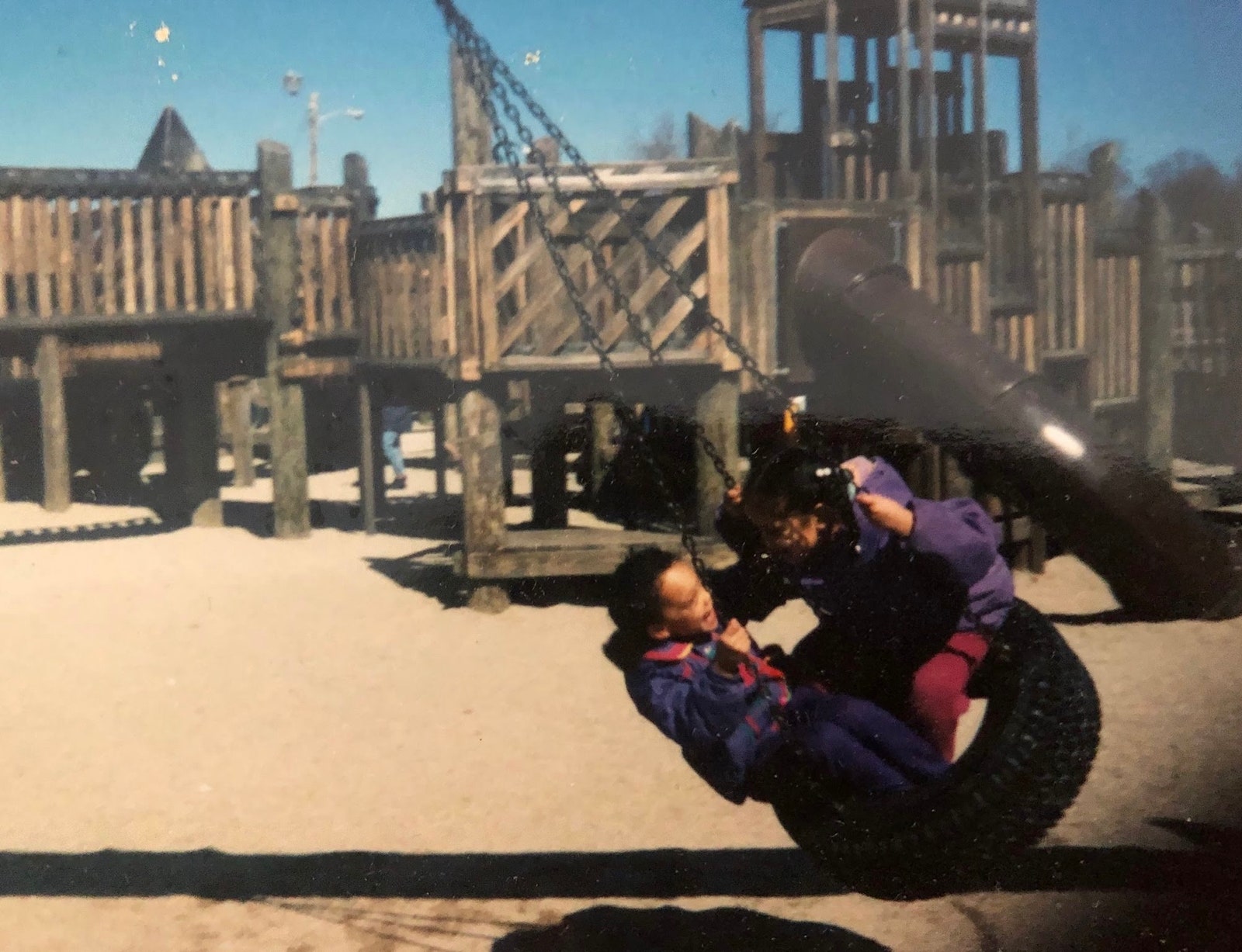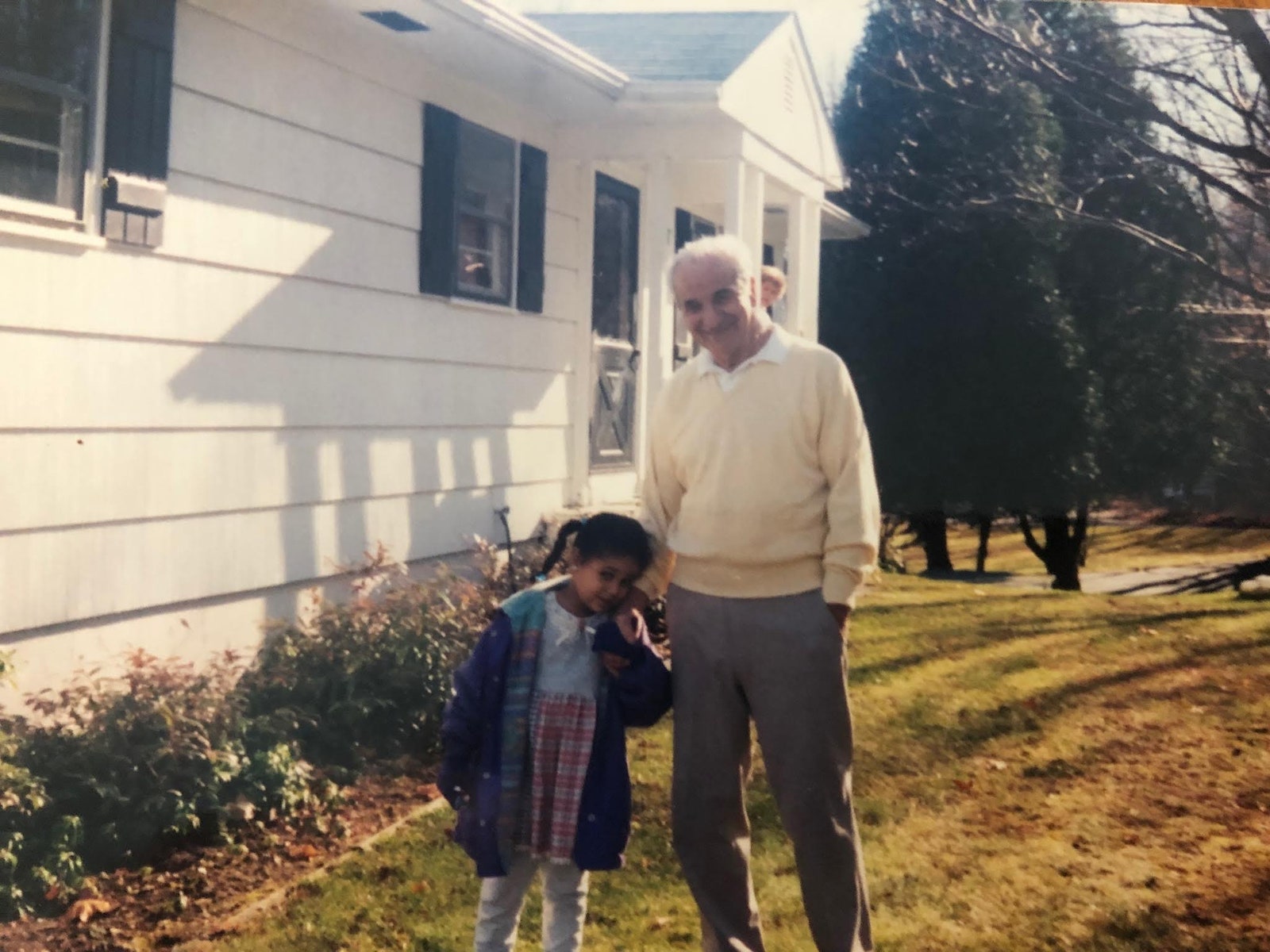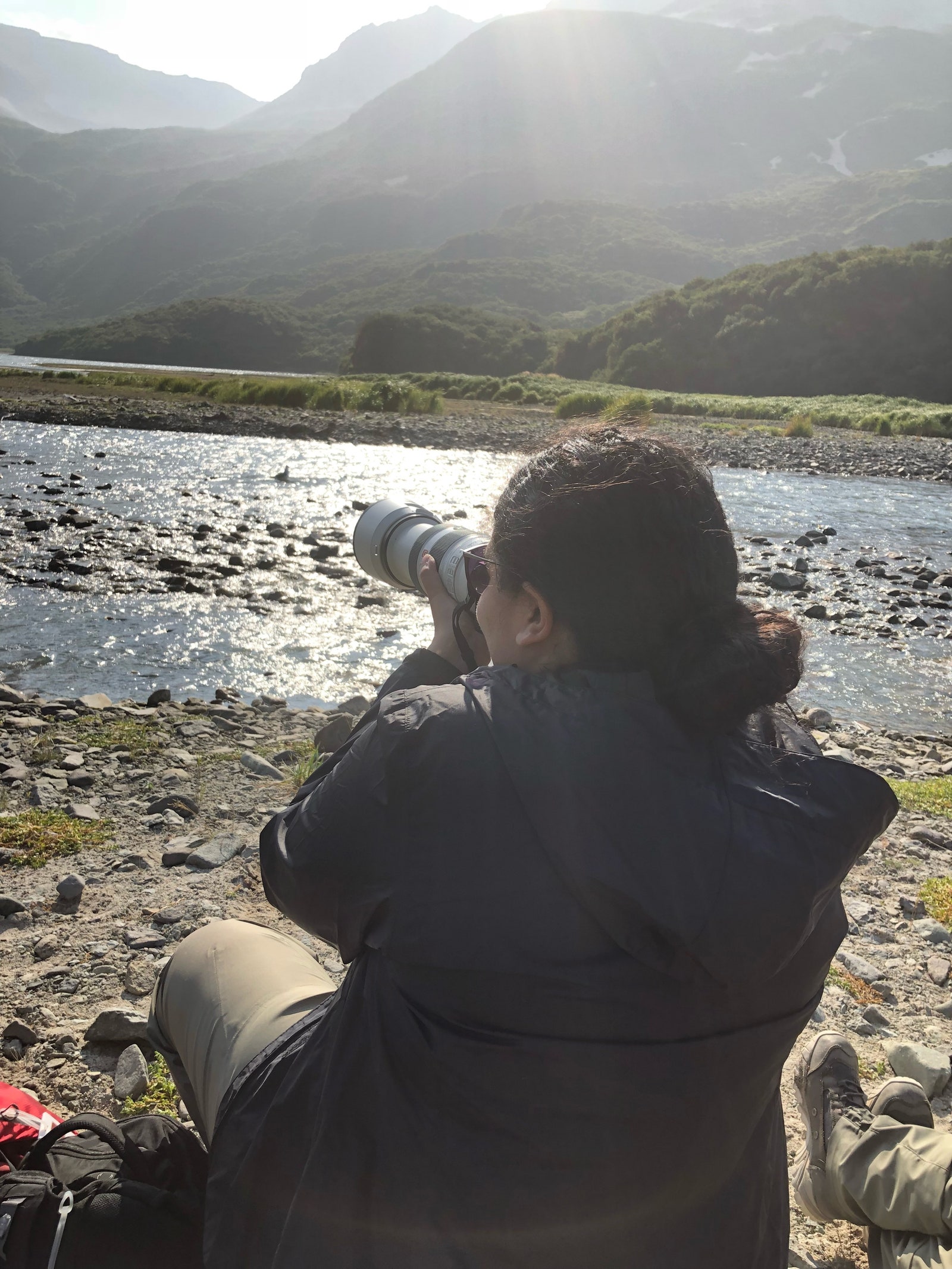Equitable access to nature won’t heal all the wounds of systemic racism. But it is a powerful start.

After Every Trauma I’ve Faced as a Black Woman, I’ve Turned to the Woods
My experience of racial violence started in childhood. In middle school I trembled exiting the school bus one day, just minutes after classmates knocked my head into the back of the brown bus seats. I saw flashes of those same peers who not long before called me the N-word and versions of it while they chanted, drumming their index fingers on The Magic School Bus picture books. They followed up with whispers about the size of my lips and the watermelon printed on one of my “knockoff” T-shirts.
For solace I took walks in wooded areas with my grandfather on metaphorical treasure hunts in Connecticut—and around Sharon, Massachusetts, where I grew up. I laughed until my stomach cramped while my dad pushed me round and round on a makeshift tire swing in a local park. I made up silly outdoor games with my brothers. And I went on peaceful walks with my mom to a “special rock” where we paused life, easing the pains of a world making me grow up too fast.
Nature fortified my resilience as a biracial woman of color, eroding my ruminating thoughts with each light whisk of the breeze, trickling creek, and rustle of wildlife. As I’ve grown into adulthood, I’ve found myself turning to nature again and again—after the murder of George Floyd and countless other Black Americans at the hands of police, after an aggressive display of racism in Central Park against Christian Cooper, and after countless other acts of violence against people of color. That’s because nature promotes justice by healing generational trauma, a salve that feels almost instinctual.
I’m certainly not the only one who has found a refuge from racism here. After her family member was almost lynched, a friend visited parks to combat her risk of suicide. Other women of color described accessibility to the outdoors as a respite—healing, even if for a moment—from feeling ostracized and alone. “Being a woman of color leads to a lot of stigmatization,” says Melissa Rimple, a physical therapist from Houston, Texas. “Hiking with my dogs has really helped me escape from the rest of the world. Especially during this pandemic when being alone seems isolating, I’ve really appreciated my time outside to avoid the bombardment of death and tragedy.”
Despite the powerful ways nature can promote healing, according to a Center for American Progress report, communities of color are three times more likely than white communities to live in places deprived of nature. In communities of color with low income, more than 76% of people have less access to nature nearby than the rest of the United States. In 26 states, Black communities were found to have the least access to public land and parks—at the highest levels of nature deprivation.
My resilience traces to my ancestors, who tilled America’s land, used the cover of its woods to escape slave catchers, and flourished on its soil despite the white supremacist barriers built against them. Equitable access to nature is one of the most important yet often overlooked actions to address systemic racism.
The author with her brother in a local park
Courtesy of Dominque MannThe author with her grandfather, about to take a walk in the woods
Courtesy of Dominique Mann“Back in fifth grade I tried to overachieve my way into worthiness as the only African American child in a ‘gifted and talented’ program. I won every award I could, but I never felt an embrace from my peers or understanding from my teachers,” says Chika Anyasodike, a creative producer living in New York. “One day my teacher had planned a small excursion for our class to explore Ship Island, a small body of land right off the coast of Biloxi, Mississippi. I am not sure if I had ever stepped foot on a beach before then, but the sun that day knew me so well. Nature literally grounded me–embraced me as one of Her own. On the bus ride home, I couldn’t help but feel that a secret had been whispered in my ear: ‘Never alone.’”
AdvertisementThe emotional safety I’ve found in nature helped me thrive academically and professionally, which included a job working for America’s first Black president, Barack Obama, in the White House. Working for a historic president and colleagues, many of whom I bonded with, was healing. But still I wasn’t exempt from the struggles of navigating race and womanhood. And during that period I also became survivor in the #MeToo movement.
A former colleague and friend at the White House reintroduced me to nature, making me feel seen and safe in ways I forgot were possible. Those powerful moments carried equal, if not more, weight than Rose Garden speeches or West Wing meetings. That’s because I didn’t initially realize (since my work output didn’t suffer) that the cyclical, private conversations I had with him in the outdoors when days felt harsher were actually forms of anxiety, sometimes panic episodes, that I had disguised just so I could feel like I belonged.
I also relied on nature in battles against stigma, especially when some people—not most—met my stumbling to speak up about struggle with judgment, or a painful silence that made me feel like being a survivor and the aftermath of it had been my fault. It felt like my humanity wasn’t seen. But in the depths of lush forests in national parks I visited with friends, or amid the brown bears in Alaska, I knew the leaves wouldn’t intentionally shrivel away from me; the breeze wouldn’t decide I wasn’t worthy.
Equitable access to nature isn’t a complete or perfect solution for racial trauma. The tranquil poeticism of swaying trees also emits a haunting echo for many people of color to the tune of Billie Holiday’s chilling “Strange Fruit” lyrics, “Black bodies swinging...from the poplar trees.” Lynching isn’t in talking points about the great outdoors, the “lone ranger” trope, or social media images of majority white groups of hikers—that stain is still there nonetheless. But it is a powerful start.
The power of equity in nature is an ongoing, critical need for myself and communities of color. Just last year my neighbor intentionally left his front door open for me to discover his decayed body after he committed suicide amid the COVID-19 pandemic, and I found myself turning to nature once again to heal. This time I walked almost every day in my Bay Area neighborhood, along the same tree-lined sidewalks that my neighbor had tread. With each step, the images in my mind became more flexible—rather than the flashback depicting my neighbor frozen in his last struggle, each footstep instead reminded me of his quiet courage, gentle heart, and ethereal community spirit.
The author on a hiking trip in Alaska
Courtesy of Dominique MannWe need action centering equity and nature. We need support for organizations like the Trust for Public Land, Diversify Outdoors, Urban to Wild, Youth Outside, Soul Trak Outdoors, and Outdoor Afro, which try to ensure communities of color live near safe, expansive parks, where the air is clean. We need to prioritize organizations that empower people of color, fight against climate change, and diversify images of people outside. And we need to vote. “Many of the most impactful actions happen at the local level. Whether it’s a neighborhood council or county commission—we have to put people of color in positions of power in communities,” says Ronda Lee Chapman, equity director at the Trust for Public Land and a Black woman who has been an outdoor enthusiast for over 30 years. “The decision-making power is critical.”
Equitable access to nature is a measure of our ability to care deeply about each other’s humanity, even if we’re different. It’s a hope in parents’ eyes after reading a bedtime story to their children, or pushing them on a park swing set. They hope the world will look into their children’s eyes, as my parents looked into mine, and see what they do—with an earth-shattering, audacious, transcendent love.
When I look into your eyes, I want to see my humanity reflected back, glistening.
Dominique Mann is a writer and former Obama White House staff member.
This story originally appeared on: Glamour - Author:Dominique Mann




























